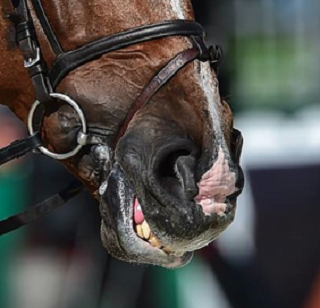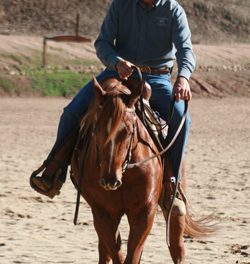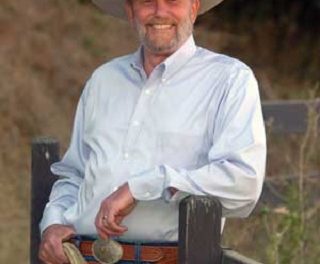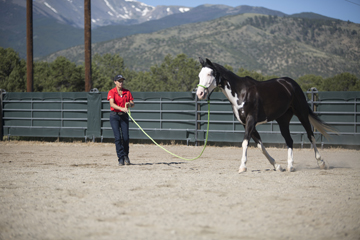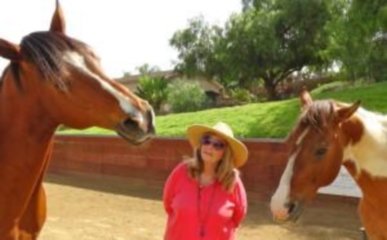 As you all know, who are my Facebook friends, I was struggling on a topic for my next blog. After your suggestions I was going through my home feed, on Facebook, and I ran across this picture that sparked a need in me to share a story about the cruelty that many horses face in how bits and cavasons are used and how we need to change our attitude and treatment of horses.
As you all know, who are my Facebook friends, I was struggling on a topic for my next blog. After your suggestions I was going through my home feed, on Facebook, and I ran across this picture that sparked a need in me to share a story about the cruelty that many horses face in how bits and cavasons are used and how we need to change our attitude and treatment of horses.
This is my personal story, and confession, in how my temper unknowingly actually injured a horse’s mouth when I was a child of 10, the horse’s name was Babe. The story I am about to share with you taught me a big lesson from my own experience when I tried to stop Babe when she became an out of control run away horse. Up until this time my connection with horses was magical. My Dad had also made sure that he had partnered me with a horse that I could handle.
We never used tack that was meant to control an out of control horse. The purpose of tack was to ask a horse to perform what he was trained to do when you knew that the horse would do it. We used communication and good judgment and to consider the nature of the horse and his training. We also knew not to ask a horse to do anything that would cause a break in trust, cooperation, or willingness.
On the day of Babe’s injury to her mouth all of these good practices were not in play. This was created by advice given to me. I had been coached to handle Babe in a certain way, from the previous owner. He gave me Babe’s bit which was a spade bit. The previous owner said that it would control Babe’s out of control run away behavior that she was known for.
My advice is that if you think you are going to use tack to control a horse, a stronger bit is not the answer. Proper, or more, schooling is the approach you need to take. Do not ask a horse to do anything that would create an out of control situation.
Spade bits and double bridles with two bits should not be used for control. These bits were developed to give more distinct messages than a snaffle bit could and provide for a well trained horse, a well trained horse that could perform well using a snaffle bit. You want to use a bit like we use a saddle. The saddle is to give more protection to the back than riding bare back would. The saddle does not control the horse, it provides more comfort to the horse. This is how you want to look at choosing a bit. I personally don’t use bits anymore. All of my programs are bit-less.
My Dad bought Babe for $50.00. That was what she was worth in those days. Her value had been set by killer price standards. She was 18 and had spent her life as a rental horse. As a rental horse all she knew how to do was run. My Dad got her as a companion mare for Mustang. Babe was a mustang too. They were both bays and about the same height, 14.2. Babe might have been a bit taller, but Mustang had more substance. I did not love her, like Mustang, and that is what makes the story just a little harder to tell. But Mustang made up for my lack of interest in Babe because he was crazy about her and she was crazy about him. She was quite plain and I must admit a bit ugly, if you can call any horse ugly. Mustang was the opposite. He was always the most impressive horse wherever we went.
Babe had a roman nose and a boney head with beady eyes. She had no personality. She did not like people nor did she dislike people. It was like we were simply not there. When we road her she never shied or bucked. She was truly a bomb proof horse and was never barn sour. She would run away from the barn as fast as she would run towards it. She did not rein well, but was happy to go wherever you pointed her. Her gates were so rough to ride that most people would never want to take a second ride on her.
If I had her today I would choose to bring her out of that shell, but as a child I wanted to be faithful to Mustang and I certainly was that. Babe came with a spade bit. I was told that it was the only thing that could stop her. This is when the story begins to turn ugly. Her last owner said to make sure to have the chin strap tight so I could use the leverage of the bit and to make sure it was a chain so I could be sure to stop her. I was also told that she was a very willful horse. I listened because I did not question people’s motives in those days. What Babe liked to do was run and nothing else would stop her. I rode her with the bit her previous owner had given me not knowing any better. The bit was made out of some kind of aluminum pot metal; it was an inferior metal that could break easily. But I did not know that at the time. One day she was running and I could not stop her. I pulled and pulled and she ran and ran. Later, after the ordeal, I thought she may have been trying to run through the pain to free herself but it turned out worse than that, much worse.
I kept pulling and she kept running. I pulled and pulled and she ran and ran. I was furious at her. How could she defy me like this? Who did she thing she was. I was going to make her listen and I used all the strength I had. I saw it as a war that I needed to win and I would teach her a lesson! Then all of a sudden the bit broke in her mouth and she kept running for a while, with me on her wondering what to do on a run away horse. Babe had won the battle. Then up ahead of us was a small pool of water in the middle of the road and she opted to stop rather than to run through it. Or maybe she stopped running because she had escaped from the pressure of the bit. This is common in horses that are nervous. Once the bit is removed many nervous horses will relax and even enjoy being ridden.
I was wrong on all accounts of why she behaved like she did. When I got off her I must have been a mile from home. At this point I knew that she was probably hurt from the bit breaking. I was afraid to look.
I was right. She had blood in her mouth and it was on me as well. I had done this to her. I was horrified in what had happened. What could I have been thinking? How could I have done this to her? Look what my anger did to her. This was yet another pivotal point in my life that shaped my character and caused me not to be lead by others and not to trust myself in anger and that a horse needed to be treated with reverence, no matter what.
On my walk home I cried while talking to her about how sorry I was. When we got back I put her up and her mouth was still bleeding. I went to get a cloth so I could check her mouth for the damage that I had caused. I was gone a few moments and when I got back she was relaxed and eating oat hay. I thought, “wait a minute her mouth is not hurting if she is happy to eat oat hay”. She let me clean her tongue. I pulled her tongue out of her mouth and it came out easily, I cleaned the blood away and could see that her tongue was scared so badly from past abuse that it was no longer shaped like a tongue. It was scalloped with pieces missing. The damage I did to her was minor, just a small cut that was healed in a week’s time with no scar.
As I was cleaning her tongue I squeezed her tongue to see if she had any feeling in it. She had none. Then I squeezed the sides of her face and she gave no response. Babe had no feeling in the lower part of her head anywhere. I was crushed. This is where I learned that humans can be cruel, knowingly or unknowingly. I did not realize this as a child.
That day I grew up and saw that I had become a part of this world and I did not ever see it coming. Later I re-schooled Babe to stop in a halter with just a few weeks of training and I was always careful not to put her in a situation that would bring about her run away behavior. From what I learned training Babe I started to design my Method and it is a large part of the program that I offer in my online courses.
If you are going to use a bit and cavason, make sure that you can get a finger easily under the cavason. Do not use a stronger bit to replace training a horse to respond to light aids. Use only a bit that is comfortable for the horse. Take all the time it takes to train a horse so that the horse moves though his training effortlessly, easily, and naturally.
A horse is the most willing creature you will ever know. What we ask out of a horse we do not ask out of another living soul. The relationship, when you train and ride a horse, can be deeper than any relationship you will ever experience. I hope that if you are going in the wrong direction my blog will help you to see that you are. If this is the case I hope my blog will give you more consideration for your horse and his well being and his comfort. There is another way to ask for performance than to make a horse perform against his natural response to your request. Force is never an option in my book.
Developing your skills with horses should be a wonderful journey. Don’t let any experts do anything to your horse that does not seem right to you. If you feel something is not right it usually is not. The reason I am writing this blog is to help the plight of horses regarding our attitude that we have about what horses should do for us and the abusive ways that many people are using bits and cavasons and to recognize those abuses when you see them. A cavason should not to be used to make the horse bend to shouting hurtful commands from the bit. I remember years ago my dressage coach saying to me, “your horse must do what you ask Carolyn”. Today in the training world this idea has been carried too far. The message I am sharing with you is never to listen to anyone that ever said using a chain and a stronger bit, or
tighten up your cavason, is the answer. I am here to tell you that you can get a more willing performance without them. I have the program here at my ranch to help you to achieve a well trained horse without any of these tools through the art of dressage training. This training is an entirely new way to train and connect with a horse that matches the sensibility of the partnership between horse and human.
No force, no bit, no cavason. Ask in the moment a horse is willing and focused, demanding nothing and rewarding generously.
I have a new appretiship program here is Escondido, working with our academy horses, that runs from February through May, on a month to month basis. Come join us. It is a live in program, open to only 4 trainers each month. The program is focused on training from the ground for bit-less dressage. Bringing your own horse may also be possible for an additional fee. For more information email Teddie at teddie@carolynresnick.com and put “apprenticeship” in the reference line of your email.
<< Go to www.carolynresnickblog.com for more information >>

